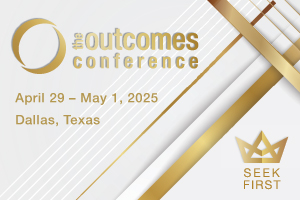
The Story that Connects by Jamie Janosz and Pete Distler
Telling the Old, Old Story in a Digital World
Today, you have an important story to tell. Yet, when confronted with media clutter and useless digital meandering on mobile devices, you may ask, “How can our story, God’s story, connect with those who need to hear it most?”
While some fundraisers and marketers are tasked with creatively compelling people to save the ocean or buy a new car, I am privileged to communicate how lives are forever changed by the gospel of Jesus Christ. At the same time, the importance of this message increases my burden to tell it well.
How do we communicate our stories in a way that honors God, supports the cause of ministry, connects with readers and moves people to action?
Capture Your Audience’s Attention
First, we need to get their attention in the midst of the media clutter.
In that flood of information, our challenge is to capture the attention of our audience and motivate them to act on our behalf. The solution: powerful, old-fashioned storytelling that captures the heart of your constituents. As you consider stories that you could share about your ministry organization, be on the lookout for those that are both emotional and remarkable.
During a routine interview with Moody Bible Institute students, one of the two scruffy, sandal-wearing young men showed me a snapshot on his phone. A 20-year-old student stood in the midst of club-goers on Chicago’s nightlife-centered Rush Street, holding up a 16 by 24-inch piece of cardboard bearing two words: FREE PRAYER.
“Wow!” I remarked. “What kind of response do you get?” Ethan told me people were curious, and many actually stopped for prayer. One couple came up and inquired about what he was doing. As he prayed for them, the woman burst into tears.
You see, I didn’t need to tell anyone our Moody students were remarkable. This story shows it, while also carrying an emotional message. Be sure your story communicates heart and human emotion. Well-told stories have the power to bypass the need for bells and whistles.
Engage Their Curiosity
How often have we clicked on the latest Buzzfeed article to find out which 10 Insects to Avoid or what 5 Vacation Spots Every Family Should Visit? These stories rarely live up to their hype, but we still fall prey to engaging with the posts.
One way to get people to read your story is by arousing their natural sense of curiosity and increasing their awareness of the need for spiritual filling. What questions are people asking that have answers within the day-to-day work of your ministry organization?
We’ve turned Moody Radio programs, author blogs and even professors’ academic articles into short-format digital pieces to successfully engage our audience.
For example, following the tragic shooting at the Pulse nightclub in Orlando, we sent an e-mail titled, “Grief and Grace: How Should We Respond to Orlando?” Moody Radio host Chris Brooks did not have time to turn around a published piece. So instead, timely content from his radio broadcast was adapted into a short-form digital piece giving biblical suggestions on how to represent God’s love to people in times of tragedy.
The digital piece took a relevant question and provided readers with both an answer and a link to the podcast. You could also link to previous articles or other material produced by your organization. Those types of short-format digital pieces — based on available content — capitalize on our audience’s natural sense of curiosity and drive engagement leading to spiritual formation.
Make Your Donor the Hero
Finally, work on making institutional stories less about “us” and more about your donors and constituency. Rather than focusing on how successful we are, spend more time telling how we can help them serve God well.
First, it is critical that we get out of the way and let donors and constituents tell their stories. We have filmed videos of radio listeners who are serving Christ well. One, a director at a Cancer Care Center, listens to Moody Radio each day before her shift and allows God to use her to serve others.
Second, we can change the language of donor communication. Rather than telling what we do, we emphasize what they can do through our ministry. Instead of saying, “Harvest Ministry is feeding the hungry with your help,” we say, “You are feeding the hungry with your gift to Harvest Ministry.” Rather than producing an annual report, what about a “gratitude report?”
Strive to make every piece less about us and more about them (almost biblical, isn’t it?). This small change of emphasis — something as simple as increased use of the word “you” in direct mail — places emphasis on the reader, allowing them to enter your story and invest in your ministry.
Awaken Spiritual Curiosity
Technically speaking, digitally layering your incredible story into multiple “short-form” factors with “deep link” rich media options will help reach your audience in a way they are eager and able to receive it.
For example, a daily Bible verse is overlaid on a related graphic, communicated through social media. The goal is awakening spiritual yearning. This simple piece can be followed by a call-to-action in the form of a tightly edited short-form audio, video, graphic or editorial highlight on a landing page.
If time, space, curiosity and spiritual yearnings awaken, you can engage your audience on a landing page for more information, redirect them to a mobile responsive website or even give them an easy-to-complete form (requesting their e-mail and a checklist of interests). Thus, your storyboard can digitally span multiple form factors. This permits seamless consumption with options to engage your ministry organization.
Engage Through Social Media
Audiences will organically gravitate to quality discipleship stories. With small media investments, your story can increase exposure by carefully using key words in your digital copy. If your content is very relevant to audiences, Google and Facebook offer favorable rates to lower your cost. By using carefully aligned key words with selected social issues, you can digitally fan the flame in order to rapidly distribute spiritual content to dry souls.
Measuring your audience engagement will help you identify the increasing value of the content you offer. The chart below shows a two-plus-year usage trend of Moody podcast content, which is growing quickly and satisfying the souls of those seeking to apply God’s Word. These trends show what your organization might experience by engaging in strategic digital discipleship.
Our story may not be new, but it bears remarkable power to engage and ignite hearts in this modern age for Jesus. The Holy Spirit blesses our storytelling to cut through the clutter and reach individuals, even in the midst of this crazy, fast-paced digital world. What a privilege we have to communicate the remarkable story of God and his work in ways that impact today’s digital consumers, transform lives for God’s glory and engage new advocates to do his work.
####
Jamie Janosz is the content development manager for Moody Global Ministries. Jamie is author of When Others Shuddered: Eight Women Who Refused to Give Up (Moody Publishers, 2014), and is a contributing author for Today in the Word, Christianity Today’s Her.meneutics and more.
Pete Distler is director of digital marketing for Moody Global Ministries . He recently joined Moody with digital experience in the mobile and advertising industries. There post is an excerpt for the 2017 Summer edition of Outcomes Magazine | The Magazine of Christian Leadership Alliance.
Outcomes Magazine is Now Digital!
 To celebrate, CLA has made the Fall 2017 edition of Outcomes Magazine FREE to all subscribers and social followers. Take a peek and see what thought leaders have to say about STRATEGY. If you want to enjoy this publication, then we invite you to become a CLA member and receive all four editions each year directly in your inbox!
To celebrate, CLA has made the Fall 2017 edition of Outcomes Magazine FREE to all subscribers and social followers. Take a peek and see what thought leaders have to say about STRATEGY. If you want to enjoy this publication, then we invite you to become a CLA member and receive all four editions each year directly in your inbox!





